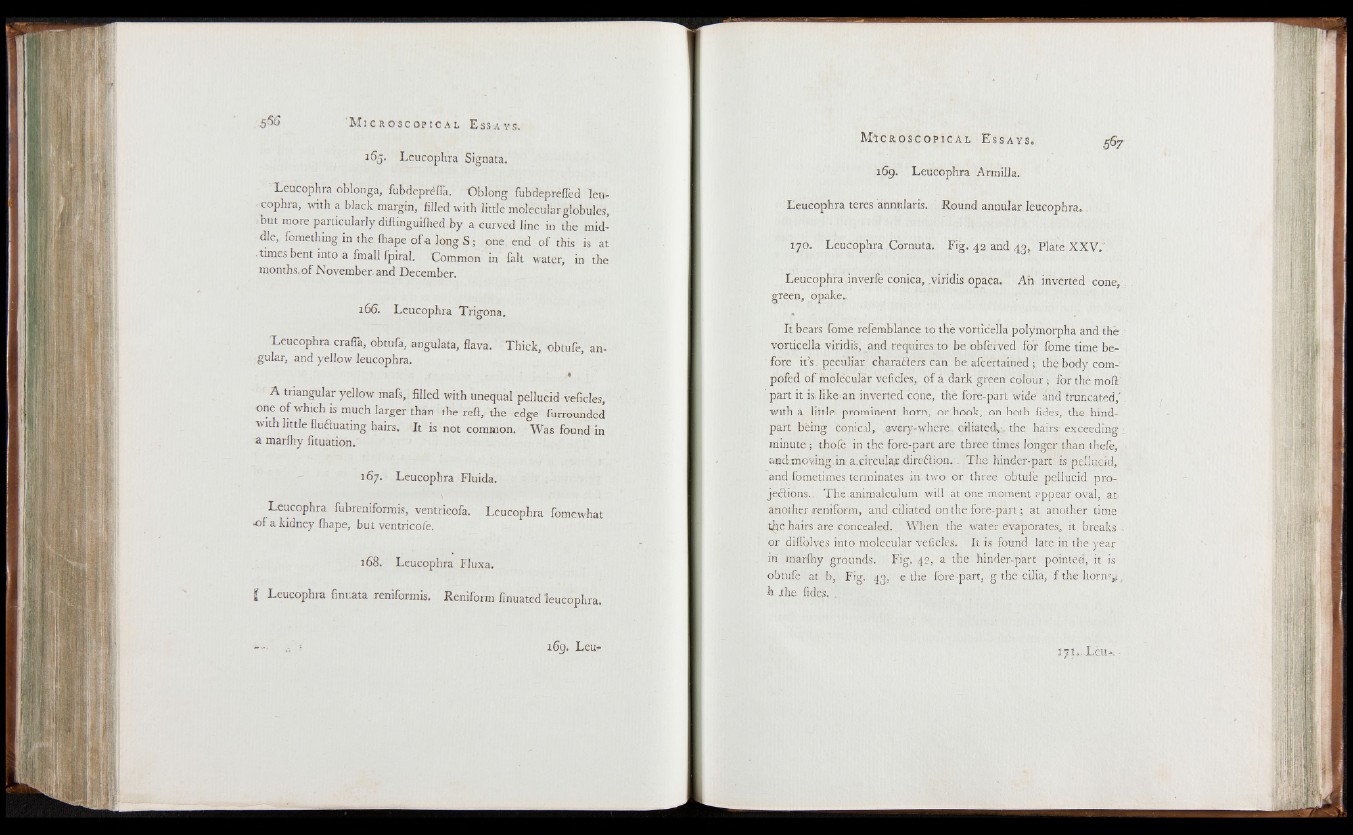
5®» ' M i c r o s c o p i c a l E s s a y s .
165. Leucophra Signata.
Leucophra oblonga, fubdeprella. Oblong fubdeprefled leo-
•cophra, with a black margin, filled with little molecular globules,
-but more particularly diftinguifhed by a curved line in the middle,
fomething in the. fhape o f a long S ; one end of this is at
times bent into a fmall fpiral. Common in fait water, in the
months, of November-and December.
166. Leucophra Trigona.
Leucophra crafla, obtufa, angulata, flava. Thick, obtufe, angular,
and yellow leucophra.
A triangular yellow mafs, filled with unequal pellucid veficles,
one o f which is much larger than the reft, the edge furrounded
with little fluftuating hairs. It is not common. Was found in
a marfhy fituation.
167. Leucophra Fluida.
Leucophra fubreniformis, ventricofa. Leucophra fomewhat
o f a kidney lhape, but ventricofe.
168. Leucophra Fluxa.
I Leucophra finuata reniformis. ReniForm ftnuated leucophra.
MiCROs c opi cAL E s s a y s . «67
169. Leucophra Armilla.
Leucophra teres annularis. Round annular leucophra.
170. Leucophra Cornuta. Fig. 42 and 43, Plate XXV.
Leucophra inverfe conica,.viridis opaca. Ah inverted cone,
green, opake.
It bears fome refernblaince to the vorticella polymorpha and the ■
vorticella viridis, and requires to be obferved for fome time before
it’s . peculiar charafters can be afcertained ; the body com-’
pofed o f molecular veficles, of a dark green colour ; for thé moft
part it is, like an inverted cone, the fore-part wideband truncated,'
with a little- prominent horn, or hook, on both fides^ . the hind-
part being conical, every-where, ciliated»;-the hairs exceeding .
minute ; thofe in the fore-part are three times longer than thefe,
andmov.ing.in a.circular dire&ion. . The hinder-part is pellucid,
and fometimes. terminates in two or three obtufe pellucid projections.,
The animalculum will at one moment appear oval, at
another reniform, and ciliated on the fore-part; at another time
the hairs are concealed. When the water evaporates, it breaks ,
or diflblves into molecular veficles. It is found late in the year
in marfhy grounds. Fig. 42, a the hinder-part pointed, it is
obtufe at b, Fig. 43, e the fore-part, g the cilia, f the horn.%i,
h the fides. ,